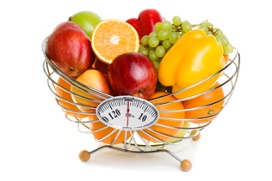Food Safety Tips to Adopt Today
 Food safety is important for everyone. Especially for those who prepare food. You probably follow a number of healthy, common sense procedures that have been passed down to you. It is a good idea to review how you are keeping your food safe. You will be surprised about what you didn’t know. Now, you can pass these food safety tips on to your family and friends to be safe and eat the healthy way.
Food safety is important for everyone. Especially for those who prepare food. You probably follow a number of healthy, common sense procedures that have been passed down to you. It is a good idea to review how you are keeping your food safe. You will be surprised about what you didn’t know. Now, you can pass these food safety tips on to your family and friends to be safe and eat the healthy way.
Food Safety Tips to Adopt for Vegetables and Fruits
Always wash your hands before preparing food and eating. Wash your hands and all food preparation surfaces frequently when preparing raw foods that might contain dirt or harmful bacteria. This includes raw meat, fish and poultry in addition to vegetables. You will want to wash your hands after peeling and/or eating anything sticky such as fruit.
Thoroughly wash fruits and vegetables that are not peeled. The apple, pear, or tomato you plan to eat has touched many hands before reaching you. Apples from the store have a waxy coating you may want to remove with a little soft scrubbing. Cucumbers may also have a coating.
Leafy greens need a good washing and rinsing. There is often dirt in spinach, lettuce, and celery. You can add a splash of vinegar to the water used for soaking the greens. Rinse them thoroughly pat dry with a paper towel. Rinse the outside of a melon before you cut into it with a clean knife. This is just a precaution in case there is dirt with bacteria on the surface that could be transferred to the inside.
Root vegetables such as carrots, onions, radishes, potatoes, and turnips should be carefully washed before preparation, especially if you are eating these raw.
Store perishable foods, including dairy products, in a refrigerator set at 40 degrees. Clean the refrigerator frequently with a vinegar/water solution and wipe up spills when they occur.
Food Safety Tips to Adopt for Cooking
Follow recipe directions for baking or cooking on a stovetop carefully. Food should be kept at a temperature of at least 140 degrees before serving. Reheat food to at least 165 degrees. Check with a meat thermometer. The heat destroys bacteria.
Defrost meat and poultry in the refrigerator, not the kitchen counter. A pound of meat should defrost in an hour. You can also defrost food in the microwave, but be carefully to follow the manufacturer’s instructions. Meat and poultry should be cooked as directed.
Raw eggs, fish, and poultry can carry a salmonella bacteria causing food poisoning. Cook eggs and poultry thoroughly. Do not eat raw cookie dough.
Food Safety Tips from NYC Weightloss Solutions
NYC Weightloss Solutions’s nutritionists will plan a diet for you with food safety tips to adopt for cooking and serving. Contact the NYC Weightloss Solutions today by clicking the icon below – or – call (212) 759-8118 to schedule a free consultation.
Click Here to Schedule Your Free Consultation
Leave Your Comment